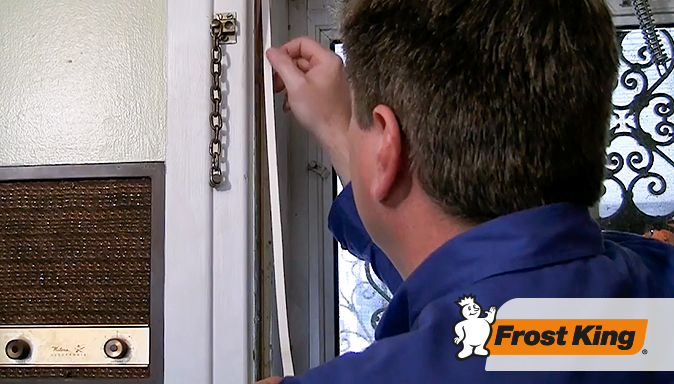As smoke from this summer’s Canadian wildfires continues to affect air quality around the United States, many homeowners are wondering if there are proactive measures they can take to improve the indoor air quality in their homes. In this blog post, we explore eight things you can do to ensure the air you breathe indoors is healthy—even when outdoor conditions are hazardous.
1. Close and Seal Windows and Doors: The easiest (and cheapest) thing you can do to keep outdoor pollutants out of your home is to keep windows and doors tightly closed when air quality is poor. Use weatherstripping or caulk to seal any gaps or cracks around windows and doors. Watch this video for a quick and easy tutorial on how to install weatherstripping:
You can also place draft stoppers at the base of doors and windows to make these openings even more air tight—just trim the draft stop to the right size and slide it under the door or close the window on it.
2. Change Air Filters: Regularly replacing the air filter in your central HVAC system can reduce airborne particles and improve the quality of the air in your home. The EPA suggests choosing a filter with a minimum efficiency reporting value (MERV) of 13 or higher. How frequently the filter needs to be changed depends on factors like where you live, how many people live in your home, and if you have pets—check the filter monthly and replace it if you can’t see the filter material through the dust. And don’t forget about cleaning and replacing other filters in your home that keep the air clean, like kitchen fans, vacuum cleaners, and clothes dryers.
3. Invest in Air Purifiers: A high-quality air purifier can significantly improve indoor air quality. Choose one with a HEPA (High-Efficiency Particulate Air) filter that can trap microscopic particles such as dust, pollen, smoke, and even some bacteria. Run them in rooms where you spend the most time, like bedrooms and living areas, for maximum effectiveness.
4. Clean Frequently: Regular cleaning can go a long way towards improving air quality. Dust and vacuum often to remove dust and allergens, paying close attention to dust magnets like carpets, upholstery, and curtains.
5. Cut Down on Indoor Pollutants: Many everyday products you may use around your home—we’re talking cleaning products, air fresheners, and even candles—give off harmful gases and chemicals that could be affecting your indoor air quality. Consider using natural alternatives instead, like non-toxic cleaning products, essential oil diffusers, and beeswax candles.
6. Increase Ventilation: While it may seem counterintuitive to open windows when the outdoor air quality is bad, letting fresh air into your home can improve your indoor air quality. Open windows early in the morning or late in the evening when pollution levels tend to be lower and run exhaust fans in the kitchen and bathroom.
7. Control Humidity: Humidity and damp conditions can lead to mold and mildew, which can impact your home’s air quality and cause respiratory issues like coughing, wheezing, and asthma. Running dehumidifiers and turning on the bathroom fan every time you shower can go a long way towards keeping the relative humidity of your home at a healthy 30% and 50%.
8. Stay Informed: Stay up-to-date on the air quality in your area by checking local air quality index (AQI) reports. Many smartphone apps and websites provide real-time information on air pollution levels so you can make informed decisions about when to keep windows closed, when to ventilate, and when to take additional precautions.
Maintaining good air quality in your home when the outdoor air quality is alarming is essential for your family’s health and well-being. Follow these strategies and you can start breathing a little easier—even when outdoor conditions are less than ideal.
